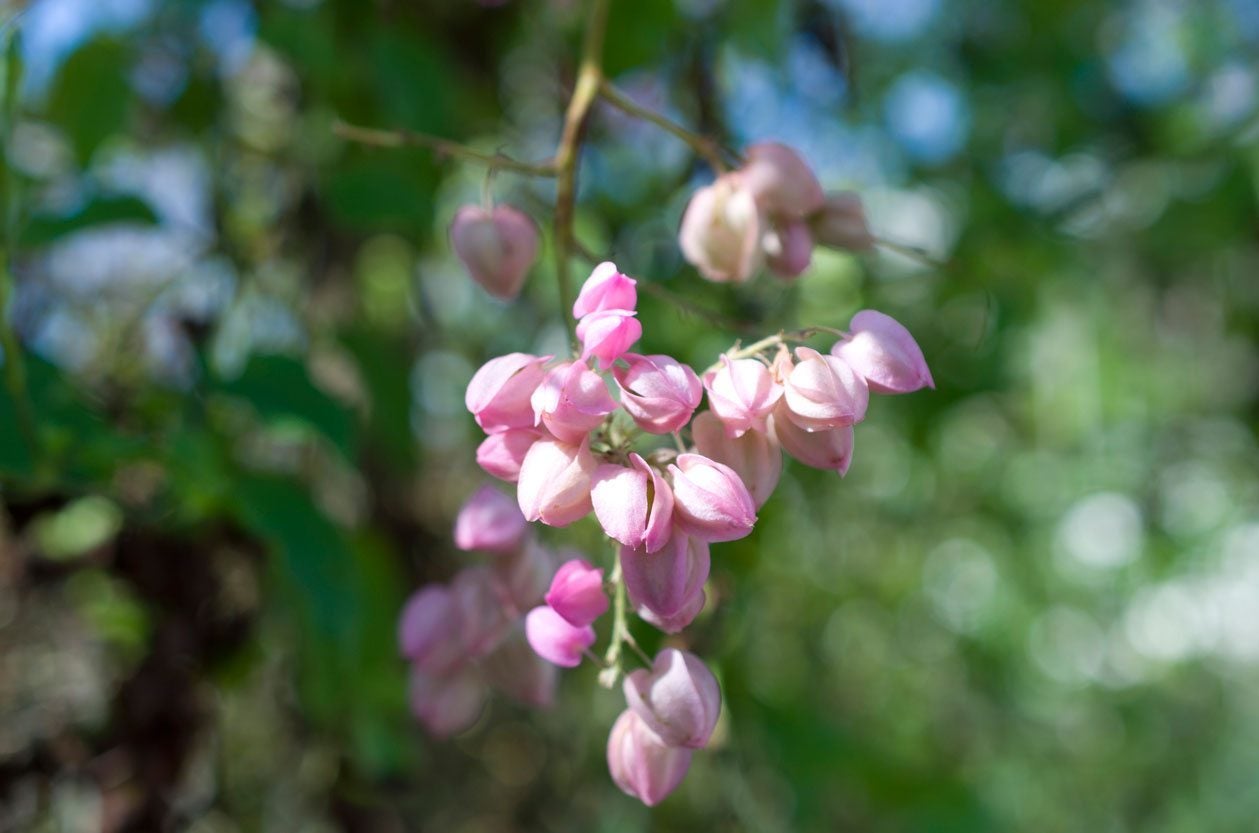What Is A Coral Vine – How To Grow Coral Vines In The Garden


Coral vines can be pretty additions to the landscape in suitable locations, but there are some things you should consider beforehand if you’re interested in growing them. Read on to learn how to grow coral vines (and when you shouldn’t).
What is a Coral Vine?
Also known as Mexican creeper, chain of love or queen’s wreath vine, coral vine (Antigonon leptopus) is a fast-growing tropical vine that grows in the warm climates of USDA plant hardiness zones 9 to 11. The plant usually freezes in chillier zone 8 but regrows readily in spring. Native to Mexico, coral vine is a vigorous vine with showy, dark rose, white, or pink flowers and big, heart-shaped leaves. When grown on a trellis or arbor, coral vine is dense enough to provide shade on a hot day. Coral vines can reach up to 40 feet (12 m.), often growing 8 to 10 feet (2-3 m.) in a single season.
Coral Vine Information
Note on coral vine invasiveness. Before you get too excited about growing coral vines in your garden, be aware that this fast-growing vine is invasive in some parts of the world, especially the extreme southern United States and the Pacific Islands. Once coral vine is established, it spreads quickly from underground tubers, smothering other plants and crawling over fences and other structures. Additionally, the plant is a prolific self-seeder, and the seeds are spread far and wide by water, birds, and wildlife. If you aren’t sure about coral vine invasiveness in your area, check with your local cooperative extension office before planting.
How to Grow Coral Vines
Growing coral vines is an easy endeavor. You can propagate coral vine by seeds or divide a mature plant. The plant is adaptable to nearly any well-drained soil. Coral vine thrives in full sunlight but tolerates partial shade. Give coral vine plenty of room to spread. Additionally, coral vine climbs by way of tendrils, so be sure to provide a trellis or other sturdy support.
Coral Vine Care
Water coral vine regularly during the first growing season to get the plant off to a good start. Thereafter, coral vine is relatively drought tolerant and requires only occasional irrigation. Once weekly during hot, dry weather is generally plenty. Coral vine normally needs no fertilizer, but you can provide a general-purpose fertilizer once or twice during the growing season if growth appears weak. Prune coral vine every year in late winter or early spring to keep the size in check, then trim as needed throughout the year. Alternatively, just shear the plant to the ground in spring. It will bounce back in no time at all.
Sign up for the Gardening Know How newsletter today and receive a free copy of our e-book "How to Grow Delicious Tomatoes".

A Credentialed Garden Writer, Mary H. Dyer was with Gardening Know How in the very beginning, publishing articles as early as 2007.